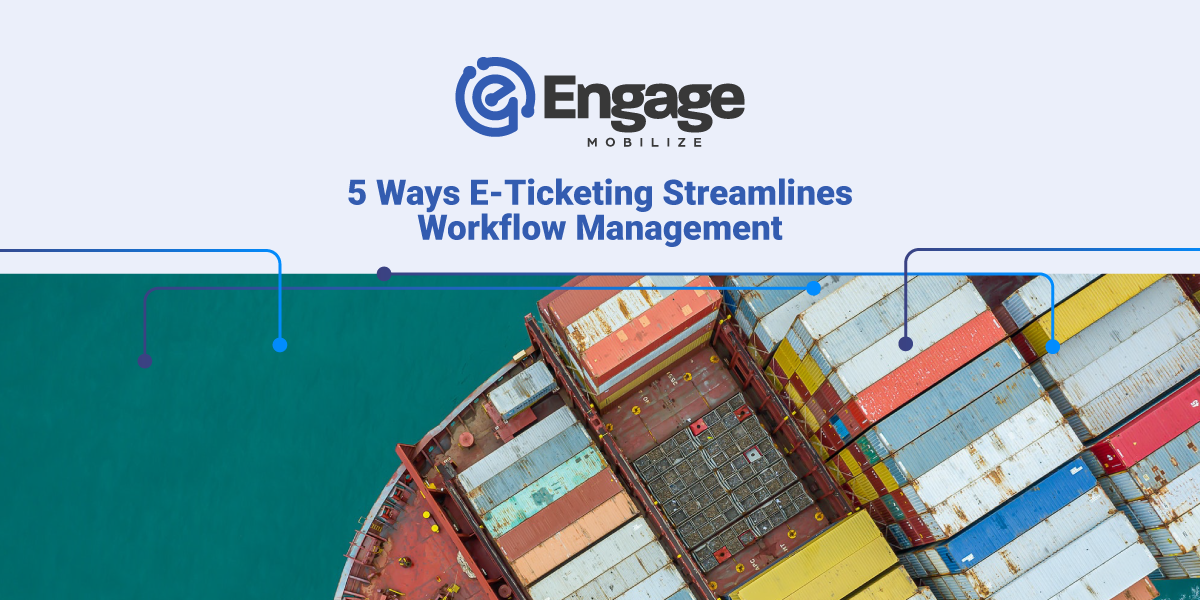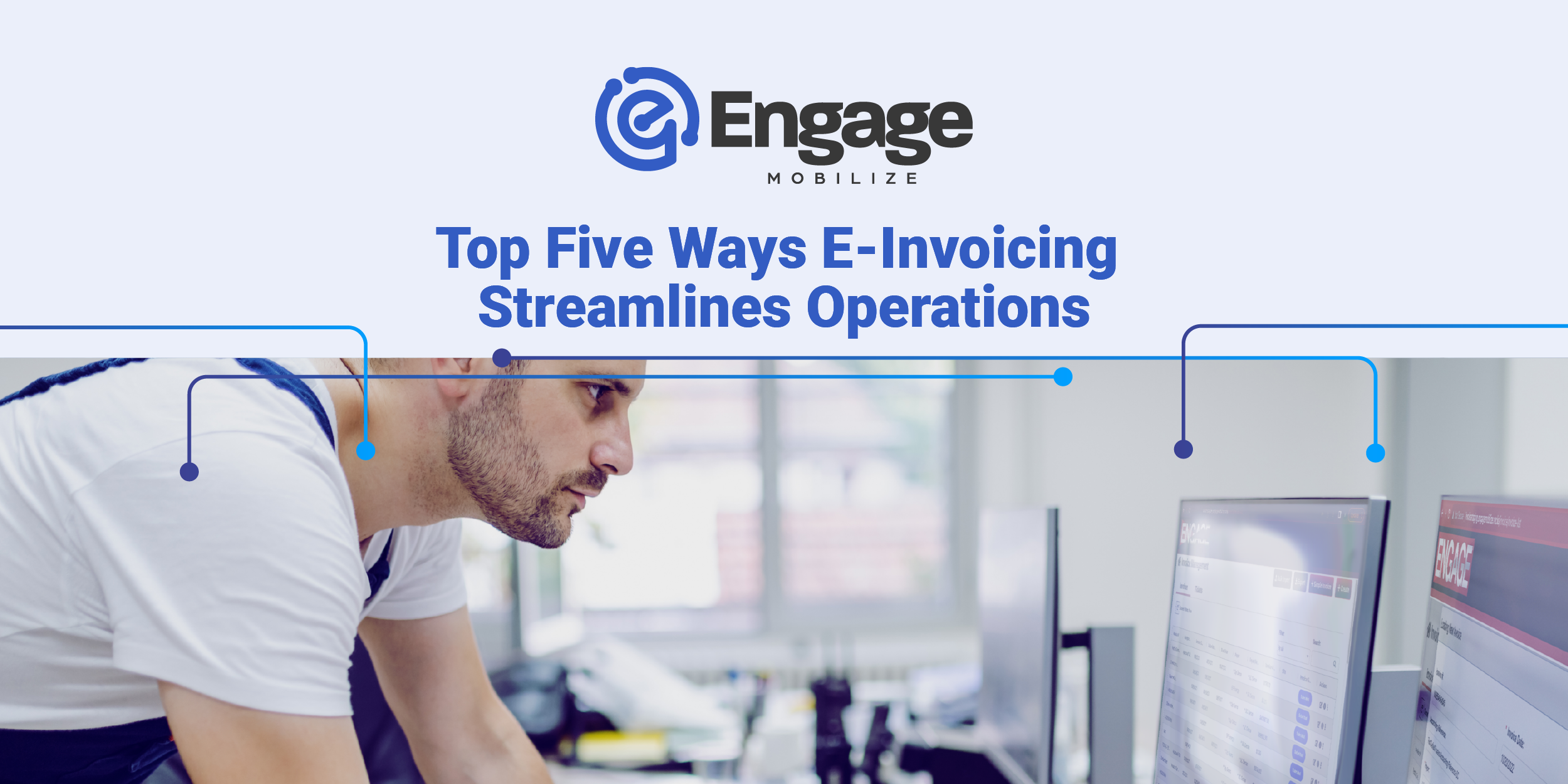5 Ways E-Ticketing Streamlines Workflow Management

Inefficient workflow management is costing your enterprise time and money every day. While your team is waiting for approvals, prioritizing events, and avoiding compliance audits, bottlenecks are created and jobs fall behind.
Reams of data and mountains of paper only add to the clutter and confusion.
In industries related to fuel and energy production, profitability often depends on the output. Wouldn’t it be nice if your workers could focus on productivity and service delivery?
You already know that investing in technology supports an efficient, profitable enterprise. However, many businesses focus on high-level efficiency issues and forget about the minutiae of field and production facility operations that create unsafe, unproductive environments if there’s no cohesive system in place to manage workflows.
In addition to automated billing, supply chain management, and operations, you need an E-Ticketing system to manage workflows on a more granular level.
What is Workflow Management?
Although the terms are often used interchangeably, process and workflow management are two separate activities with different scopes and goals. Process management takes a broad approach to overseeing business processes that involves multiple levels, departments, and locations. Workflows are the set of steps needed to complete individual, sometimes repetitive tasks. There is only one goal within a workflow, where process management oversees several workflows within an operation.
Implementing a multi-tiered E-Ticketing system into your process management configuration improves efficiency from the bottom up while providing a great ROI in terms of benefits and savings.
Not All Workflows are Created Equally
Workflows are either sequential or parallel. With sequential workflows, each task is dependent on the previous step to be completed before it’s triggered. For example, reimbursement can’t happen until a task is approved. These types of workflows also include rule-based tasks that follow a flow of logic and triggers actions from one event to the next.
Parallel workflows involve tasks that run simultaneously and may or may not depend on another action to complete. For example, the way a computer can download files and transmit email while you’re managing a database or ordering equipment online.
Imagine the impact automation has on these workflows.
5 Benefits of Using an E-Ticketing System to Manage Workflows
1. Eliminates Repetitive Tasks
According to research, time spent on repetitive tasks costs companies about $5 trillion per year. When steps are pre-defined and automated to proceed as soon as conditions are met, repetitive tasks are eliminated and the workflows move swiftly from one step to the next.
2. Increased Productivity
A solid workflow management system naturally leads to increased productivity. Rather than wasting time completing tasks that can be automated or constantly checking for updates, your team can focus on more critical activities. Progress is easier to track within the automated platform, and any missing steps, tasks, or approvals are flagged immediately in real-time.
3. Seamless Connectivity
This is especially important for industrial enterprises that have field offices and multiple locations. An automated workflow system coordinates communications between offices, production facilities, warehouses, and logistics. Data is collected and compiled in real-time, and any issues can be communicated immediately for faster resolution.
4. Reduced Errors and Risk Mitigation
Although you’ll never entirely eliminate risks, automating workflows offers built-in risk identification and mitigation systems. There’s less room for error because the steps within the workflow are pre-defined. Potential issues can be identified before they become costly mistakes. The system can then initiate measures to prevent a recurrence.
5. Parallel Workflows are Easier to Manage
Although workflows in an industrial setting are usually linear and proceed as steps are completed, there are many times when it’s necessary to coordinate non-linear workflows. With an automated workflow system in place, multiple tasks are easier to juggle and complete. For example, customizable ticketing allows requests to be identified according to type or priority and automatically transmitted to the proper process within a workflow.
The results of implementing an efficient automated workflow application into your enterprise go beyond time and cost savings to include a happier, more productive work environment and a higher degree of customer satisfaction.
When do You Need a Workflow Management System?
Whether you run a large oil & gas enterprise or a small petroleum refinery, your business involves a lot of moving parts. Inefficient workflow management on any level leads to unnecessary disruptions and bottlenecks that can only be alleviated when there’s a system in place to ensure that the work flows smoothly.
When you’re evaluating E-Ticketing systems to manage workflows at your operation, look for a platform that offers:
- Full automation
- Complete customization
- 24/7 support
- Workflow scalability
- Multi-channel accessibility
- Different ticket categories and tags
- Real-time reporting and tracking
- Team empowerment
You also need something that offers simplicity regardless of the complexity of the steps embedded within the workflow. That includes ease of use, clean design, and a shallow learning curve so that the new system can be quickly integrated and operational in the shortest possible amount of time.
How do you know if your enterprise would benefit from an automated workflow management system for e-Ticketing? Before undertaking any sort of automation or digital transformation, it’s important to understand how the processes within your operation impact each other, your team, and the enterprise as a whole. Hitches or bottlenecks in even one workflow could adversely impact your entire operation.
Understanding the Workflows in Your facility
Workflows are comprised of three basic components: the steps involved, the persons or processes impacted by each step, and the conditions or rules that govern how and when the work should flow.
The steps provide a framework for what should happen from the time a task is initiated until the endpoint. They are clearly identified and defined so that each step has a clear purpose or goal. This allows stakeholders to know exactly what is expected of them when completing their part of the process. Automation allows them to carry out critical tasks that need their full attention and attend to automated tasks only when a problem arises.
The conditions are based on the rules set for each step within the workflow. Through customization, the next step in the process is automatically initiated once the pre-defined condition is met.
In order for this to happen in the most efficient, cost-effective manner, managing workflows needs to be an enterprise-wide effort that’s initiated after careful evaluation and understanding all processes involved in the enterprise. This means getting input from all stakeholders at each step of evaluation and implementation and following workflow management best practices
- Clearly identify and define all workflows within your enterprise. In any given department or branch, there are hundreds of workflows in process at any given time. No one workflow should be hidden or overlooked during the evaluation process.
Consider:
- What is the purpose and goal of each workflow?
- What are the steps involved?
- What people or processes are impacted?
- Prioritize Workflows. Once you’ve identified the workflows that make your operation run, you need to prioritize them to optimize those that are critical to efficient operations. This is done by identifying workflows within the workflows and optimizing those so that they directly impact the efficiency of critical processes. Automation plays a key role by prioritizing an event that triggers multiple workflows.
- Monitor and Reevaluate There will always be some kinks to work out when implementing any new system. Monitor and tweak the application during rollout and beyond to ensure optimal efficiency and goal completion.
Ready to Streamline Your Work Processes?
Fuel and energy sector companies have a lot of moving parts to manage. Implementing an automated workflow management system helps you do so more efficiently, saving time eliminating risk, and preventing business disruption on a number of levels.
When you’re ready to reap the benefits of adding a data-driven solution to your automation toolbox, we have a system for you. Contact Engage Mobilize to arrange a consultation and find out how an E-Ticketing system will streamline your workflows and boost productivity.
Are you ready to learn more?
We’re ready to talk to you about the specific cost savings, workflow efficiencies and data insights that come from taking your field operations digital.
Share this
Similar Stories

What US Suppliers Need to Know About E-Invoicing Mandates

Top Five Ways E-Invoicing Streamlines Operations
